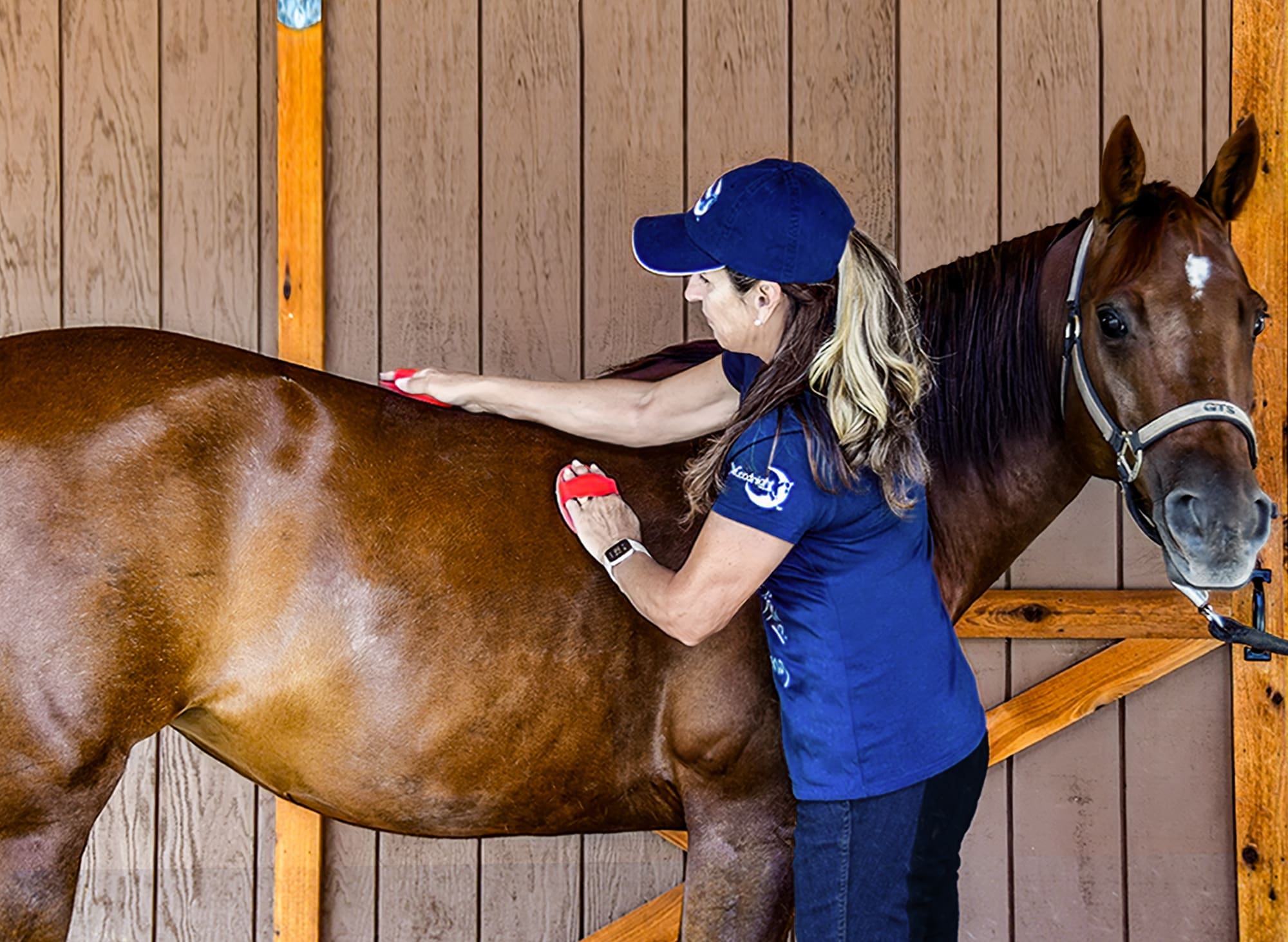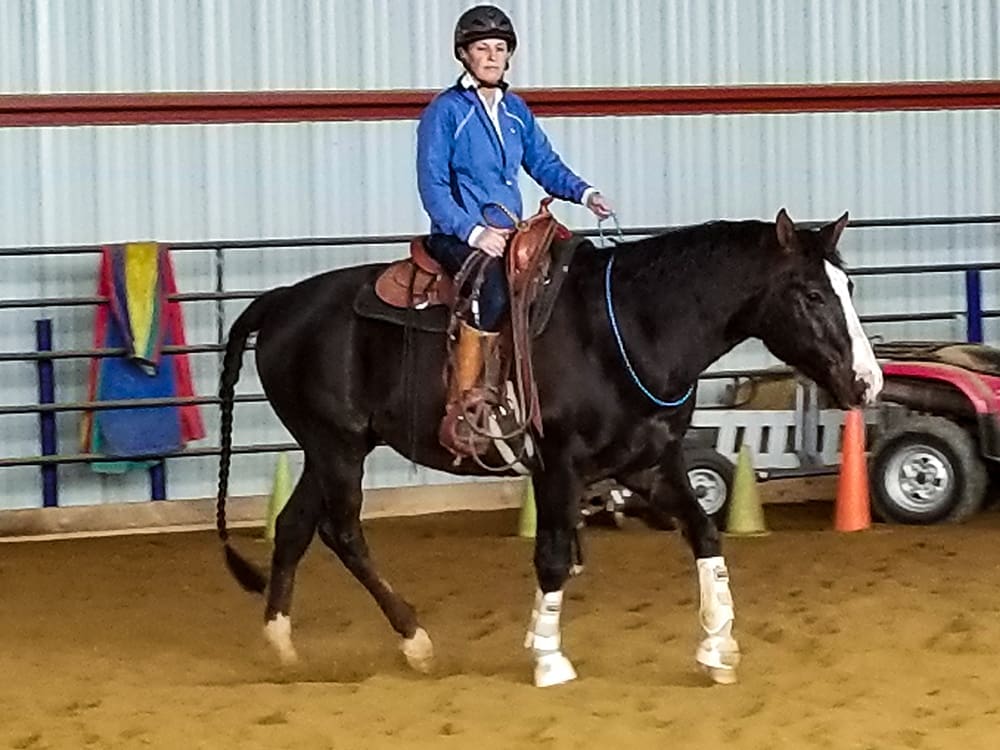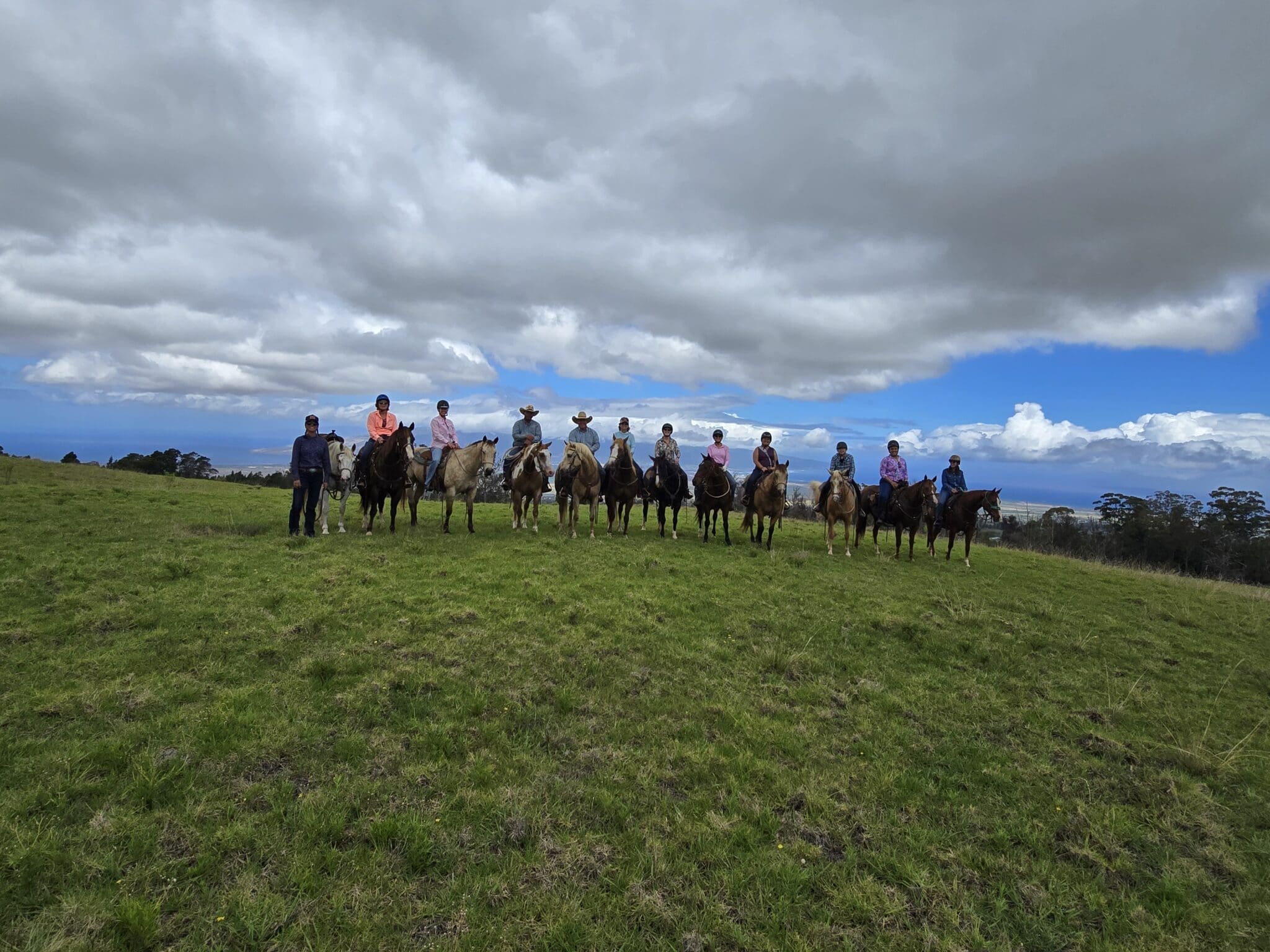
Whether your horsemanship goals for this year involve gaining confidence, an overnight trail ride, or competing in any given discipline, your horse’s appearance speaks volumes. Not only is grooming another way to bond with your horse and strengthen your relationship, the external condition of your horse reflects its health, nutrition and care.
It’s very important to me that my horses are healthy and have a high level of care. One bonus of that for me is admiring the sheer beauty of their gleaming coats and flowing manes and tails as they graze or gallop around the pasture. It’s one reason I’ll never grow tired of watching horses.
More than that, grooming plays an integral part in the day-to-day comfort and well-being of your horse—helping them ward off biting insects, stay comfortable in all ranges of weather, and prevent harmful bacterial and fungal infections.
This month, I’ll share with you some of the grooming hacks I use on my own horses. It’s not rocket science, and a lot of it involves a good amount of work and commitment over time (a bonus for your workout routine!). But if you want your horse to look and feel great, these tips are for you—and more importantly, for your horse.
You Are What You Eat
The quality of your horse’s forage has the greatest impact on health and bloom. Grazing on green grass or supplementing a small amount of alfalfa will bring out the coat’s color and dapples. Be very cautious with alfalfa for the average horse, but if you have youngsters, oldsters, or horses in heavy work, ask your vet if it could help.
Vitamins are important for balancing out the deficiencies in your forage. Horses with high quality forage may not need a vitamin supplement, but all my horses receive a general-use vitamin supplement every day.
Adding a small amount of fat to your horse’s ration helps bring on the shine in their coat, and may also help a thin horse put on weight. Talk to your vet to see if it might be a good option for your horse, and (as with any changes in feed) work up to it slowly.
Healthy Coat & Skin
There are many variables that determine how people groom and care for their horses. Just in the U.S., the climate can vary drastically from hot and humid to hot and dry, and from cold and dry to cold and wet—and each have unique challenges. Wet and dry conditions affect the skin and hair of the horse quite differently, from rain rot to sunburn.
Curry your horse’s coat daily, using grooming gloves or rubber curries. As the coat sheds out and gets thinner, work in the direction the hair grows (not against it). I work deep into the coat to stimulate the natural oils in the skin. Sweat from workouts can wash away these natural oils, so I use a coat conditioner to help replenish moisture and protect the coat.

Use this time to assess your horse’s muscling and weight and determine how your conditioning program is progressing. Identify potential injuries from too much play time. Remove mud and dirt, especially from lower legs. This will reveal any cuts or abrasions, as well as prevent fungal or bacterial infections like scratches or rain rot.
Always groom before your ride to help prevent girth and saddle rubs. Grooming before and after a workout loosens and removes dirt and sweat, which when left on the skin can cause drying, buildup and irritation.
Tip: Spraying on a conditioning hair polish like ShowSheen after post-ride grooming also helps to repel dirt and mud. I spray my horses generously after bathing too, working into the hair coat with my hands to keep them cleaner longer. (It also reduces static and prevents rubbing, so it’s perfect to use when your horse wears a fly sheet or blanket.)
When it’s too cold to hose my horses down for a bath, Miracle Groom is a waterless shampoo that is perfect to use. Since our water is very cold here in the mountains, we use a lot of this product. You just spray it onto a microfiber rag, then rub the horse’s coat in all directions, and the dirt wipes right off. Super useful for spot cleaning too!
Mane and Tail
Depending on the discipline you ride or the activity you do with your horse, you may keep the mane short or long, braided, banded, free-flowing, or roached. Competitions often require a certain style of grooming—sometimes dictated by rules, and sometimes by tradition. Whether your goals involve the trail or the show ring, keeping the mane and tail healthy is important for your horse.
Combing or brushing the mane and tail is a major cause of hair breakage and thinning. Gently remove any debris or tangles with your fingers, then use your fingers like a comb for daily grooming. If you must use a comb/brush, start from the bottom and slowly work your way up.
ShowSheen® Detangler Gel comes in really handy when my horses come in with wind knots or sand burrs tangled up in their manes and tales. It makes freeing the hair much easier, and prevents it from getting more damaged in the process. Squirt the gel on the trouble area and allow it to sit for 10 to 15 minutes. Use your fingers to gently untangle knots and expose burrs.
We keep tails in a loose braid to help them stay thick and grow long, while still allowing the horse to comfortably use its tail. Make sure the mane or tail are clean and conditioned with a protective coating like ShowSheen first. Avoid tight braids or starting the braid too high, as this will lead to more breakage than it prevents.
Face and Legs
ShowSheen® Stain Remover & Whitener is excellent for getting white markings whiter. Just spray it onto a rag first, and then work into the hair. It can be used while bathing for even better results. Use a curry comb or grooming gloves to scrub down to the skin where much of the dirt is.
Baby oil on a damp rag is useful for cleaning nostrils, lips, ears, and eyes. It will clean away dirt and also moisten the sensitive skin in these areas.
Witch hazel is a mild astringent that can be used on sensitive areas of the face without burning or irritation. I think cleaning the eyes, lips and nostrils is important but overlooked by most horse owners.
Essential Tools
Hands-on Grooming Gloves are the best for giving your horse a complete head-to-tail curry, allowing me to get deep down to the skin and give the horse a nice massage in the process. The HandsOn Finishing Gloves are brand new, and help me remove that last layer of frustrating dust that sometimes appears after grooming. (I call it “dustration.”)
Small, palm-sized rubber curry combs are perfect for pulling out dead hair and getting the hair coat slick. Don’t forget to curry all over, including legs and face, modifying the pressure on bony or sensitive areas. White markings definitely need currying to keep the hair from getting bushy.
To me, natural bristle brushes work better and are more comfortable for the horse than synthetic bristle brushes. They cost a little more, and may be harder to find, but they are worth the effort. If you have a sensitive-skinned horse, this can be a game-changer.
One of my favorites is using this cool shammy. It’s one of the most versatile tools in my tack room for things like dusting off my saddle, cleaning my bridle, drying a wet horse, rubbing off sweat marks, and keeping my truck and trailer. (But keep your eye on them… they seem to have legs! 😉)

Blankets & Sheets
The right kind of turnout blanket or sheet can protect your horse’s coat from sun damage, insects, and bite marks from other horses. I only use light colored sheets to keep my horse cooler, and I prefer a nylon lining on the inside to help polish the coat.
We also use mid-weight and heavy-weight blankets with turtlenecks in the colder months to keep their winter coats thinner. My horses are NOT blanketed because they need the warmth (although sometimes I do think they appreciate it). Healthy horses with adequate coats, good weight, shelter or windbreak, and free access to quality hay handle very cold temperatures just fine. For the most part, we put blankets and sheets on horses for our own convenience.
For instance, since we ride indoors all winter, we like to keep our horses’ winter coats short and keep them blanketed starting early in the fall. A horse with a full winter coat will sweat buckets, and a wet horse with temps below zero is a big problem. To prevent this, we keep their hair coats short to manage the winter riding sweat. As an added bonus, blanketing helps keep them clean so I can spend less time grooming and more time in the saddle.
Occasionally I’ll put a slinky on the mane to tame it. These are made of a light, stretchy fabric like Lycra, and can be used to help keep a horse clean and protect the mane and coat from rubs. However, I always make sure the horse gets some fresh air and sunshine daily. I avoid using slinkies day-in and day-out because I think it stunts hair growth over time.
UV & Insect Protection
At this altitude, the UV rays are 40% more intense than at sea level, so we keep my horses’ hair well-conditioned and in fly sheets during summer days. This protects their dark, richly-colored coats from getting sunburned, dull and frizzy.
Keeping horses comfortable in the heat can be tough, so a fly sheet must be cool and ventilated, and fly spray is essential. In the irrigated fields at my ranch, the insects can be intense, so protection from biting bugs is essential. We use an all-natural fly spray on some horses because of their skin sensitivity, but some horses are so sensitive to bug bites that they need an extra-strong fly spray solution.
For all the time spent in the saddle, there are hours on the ground grooming and caring for your horse, and the grooming tools, products and techniques I use go a long way toward making my routine more efficient. It’s not only an important part of prepping for rides and competitions, daily grooming is also an integral part of maintaining your horse’s health and wellness. Quality time spent grooming is another opportunity to bond with my horse, and it’s the least I can do in return for their dedication and loyalty.




